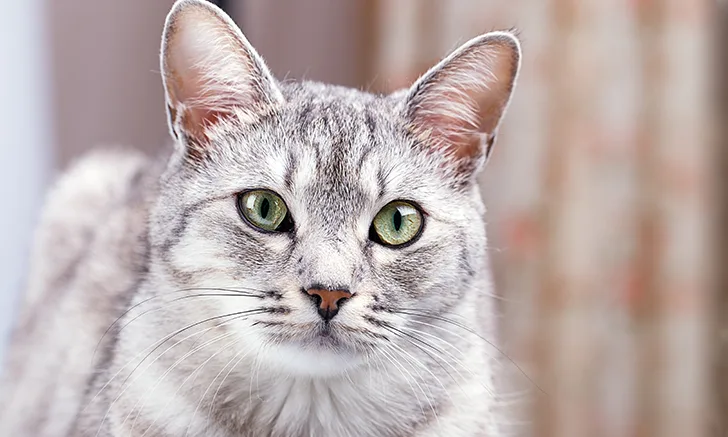Pain & Its Impact on Health-Related Quality of Life in Feline Degenerative Joint Disease
Tamara Grubb, DVM, PhD, CVMA, CVPP, DACVAA, International Veterinary Academy of Pain Management Uniontown, Washington

Sponsored by Zoetis
Key Takeaways
Based on an aging cat population and a high prevalence of DJD/OA in senior cats, a large percentage of the domestic cat population is predicted to be at risk for experiencing DJD/OA pain.
Even presumably mild pain from any cause, including DJD/OA, can cause a major negative affective impact on the individual.
In an evidence-based conceptual framework study using data from cats with DJD/OA, pain was shown to negatively impact all other HR-QoL indices identified by the study.
Main Takeaway
Treatment of DJD/OA pain in cats is expected to improve other indices of HR-QoL, including overall well-being.
Pain is not what you feel but how it makes you feel. This is a crucial concept for the individual experiencing pain—whether human or animal. Pain is not just a physical sensation defined by intensity but also an affective (eg, emotional, behavioral) sensation defined by its impact on that individual’s well-being.1-5 Thus, even presumably mild pain can have a large negative effect on the individual.
Pain measured strictly by intensity may not be adequately treated—or not treated at all—if presumed to be mild, potentially leaving the patient suffering from the affective manifestation of pain. This has led to the development of numerous pain-focused, health-related quality-of-life (HR-QoL) assessment tools in human medicine.4,6
Diseases causing chronic pain (eg, degenerative joint disease/osteoarthritis [DJD/OA]) are often incurable, and disease-associated pain can potentially have major lifelong negative impacts on HR-QoL if not recognized and treated. DJD/OA is the most common cause of chronic pain in all mammals, including cats.7 Approximately 90% of adult cats have radiographic evidence of OA, with the presence and severity of disease expected to increase by >10% each year as patients age.7 Twenty percent of cats in the United States are >11 years of age8; therefore, a significant percentage of the feline population is likely to have some degree of pain, with both sensory and affective components.
Several currently validated tools for assessment of chronic pain in cats include HR-QoL indicators.9-14 A recent study evaluated data from cats with DJD/OA with the goal of developing a conceptual framework of HR-QoL indicators.
Developing a Framework
The objective of a recent study was to produce an evidence-based conceptual framework identifying indicators of HR-QoL in cats with DJD/OA.15 A conceptual framework is an accumulation of observations gathered from a thorough review and synthesis of high-quality scientific literature published in the area of interest. The goal of developing this conceptual framework was to identify indicators and frequency of indicators related to HR-QoL in cats with DJD/OA. Generation of the conceptual framework was accomplished via an exhaustive and extensive search of the literature using the key words cat, feline, chronic pain, pain, and quality of life and by accepting only studies that met strict quality-control criteria (see Included Studies).16,17 In total, 454 studies were analyzed; of those, the data from 14 studies that were identified to be high quality were used for construction of the conceptual framework. In total, information from 1,168 cats with DJD/OA pain was included.
HR-QoL indicators were organized into categories (ie, domains). Seven domains that predictably described HR-QoL in cats were identified and used to develop the conceptual framework (Table):
Pain expression
Mobility
Physical appearance
Energy and vitality
Temperament
Sociability
Well-being
TABLE: HEALTH-RELATED QUALITY-OF-LIFE DOMAINS WITH INDICATORS
Each domain encompassed the HR-QoL indicators that occurred most frequently in that domain. These domains are interrelated; change in one domain can impact the manifestation/frequency of others. For instance, a change in temperament caused by pain will lead to changes in sociability, energy and vitality, and well-being, as seen in Interrelation of Domains, which shows the relationship of each domain to those it impacted and was impacted by. Pain expression, mobility, and well-being were identified as the key domains, as they impacted all or nearly all other domains. Increased pain and decreased mobility negatively impacted all other domains. Well-being was impacted by all domains except for appearance.
These findings support the idea that managing chronic pain may improve HR-QoL in cats with DJD/OA, including improved mobility and temperament.

Implications for Practice
The clinical impact of DJD/OA on the HR-QoL of cats was scientifically identified and documented in this conceptual framework study using a large number of cats. The identification of pain expression or pain as a negative influence on the other 6 domains is not surprising. Joint pain causes decreased mobility in cats, which can in turn impact the energy/vitality of the cat.10,18,19 DJD/OA-related pain in cats negatively impacts sociability/temperament, as evidenced by cats with higher pain scores being more difficult to handle, having a bad temperament, and being less friendly than cats with lower pain scores.18 These changes can damage the human–animal bond, potentially resulting in owners spending even less time with the cat and thus being less likely to recognize negative changes in HR-QoL. Well-being was impacted by all domains, including pain, and pain impacted all domains. This emphasizes the depth and complexity of pain’s impact on well-being.
The clinical implication of pain impacting all other manifestations of HR-QoL is that the relief of pain is expected to improve the overall HR-QoL of cats suffering from DJD/OA. This is evidenced by decreased pain-related behavior when painful cats receive analgesia.9,20 The next step is to utilize this conceptual framework to develop a fully validated HR-QoL assessment instrument for cats with DJD/OA.
EXPERT COMMENTARY
The fact that veterinary patients cannot answer the question “On a scale of 1-10, how bad is your pain today?” may be a benefit rather than a curse. Pain is often described only by its intensity, and the negative affective impact of pain on health and well-being or quality of life is missed. To better assess the true impact of pain, HR-QoL scales should be used for pain assessment. Of particular interest would be scales for cats, as they are adept at masking changes in health or quality of life. In the study described, a robust review of the literature yielded 7 categories of HR-QoL indicators in cats with DJD/ OA. The presence of pain was one of the categories, and pain directly impacted all other quality-of-life categories. Thus, relief of pain should improve all other categories and provide better quality of life for the cat. Utilization of these indicators to build a fully validated HR-QoL assessment for cats is in progress. The new scale will be a beneficial addition to existing pain scales and will facilitate identification and treatment of the affective component of pain in cats.—Tamara Grubb, DVM, PhD, DACVAA Washington State University
